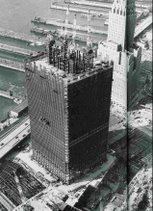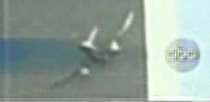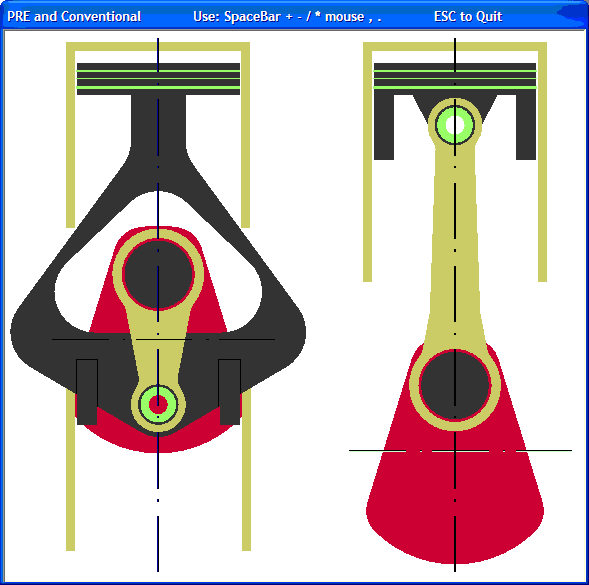The 65th Venice International Film Festival, one of the most prestigious in the world with Cannes and Berlin, closed on September 6th. While Darren Aronofsky’s The Wrestler won the festival’s biggest prize, if you take a look at all the “collateral awards”, quite a few films emerge.



Thus the Italian film Giovanna’s Father and the Ethiopian filmTeza both garnered 5 awards while the Italian Pranzo Di Ferragosto, the American The Hurt Locker, and the Italian/French/Romanian Pa-ra-da collected 4 awards each. Additionally, the Italian documentary Below Sea Level won 3 awards and the Russian Paper Soldier, the American Vegas: Based On A True Story, the Sri Lankan Machan, the Japanese Ponyo On The Cliff By The Sea and the French films Stella and L’Apprenti each got 2 awards.
View the full list of winners right here:
Main Prizes
Golden Lion for best film: Darren Aronofsky’s The Wrestler
Silver Lion for best director: Aleksei German MI. for Paper Soldier (Bumaznyj Soldat)
Special Jury Prize: Haile Gerima’s Teza
Coppa Volpi for best actor: Silvio Orlando in Giovanna’s Father (Il Papà Di Giovanna)
Coppa Volpi for best actress: Dominique Blanc in L’Autre
Marcello Mastroianni Prize for best emerging actor or actress: Jennifer Lawrence in Burning Plain
Osella for best cinematography: Alisher Khamidhodjaev and Maxim Drozdov for Paper Soldier
Osella for best screenplay: Haile Gerima for Teza
Special Lion for overall work: Werner Schroeter
Luigi De Laurentis Award for debut film: Gianni Di Gregorio’s Pranzo Di Ferragosto
Horizon Prizes
Premio Orizzonti: Lav Diaz’s Melancholia
Premio Orizzonti Doc: Gianfranco Rosi’s Below Sea Level
Special Mention to: Philippe Grandrieux’s Un Lac and Huang Wenhai’s Women
Short Film Prizes
Golden Lion for best short film: Carlos Armella’s Tierra Y Pan
Special Mention to: Karchi Perlmann’s Vascora
U.I.P. Award for best European short film: Joost Van Ginkel’s Zand
Collateral Awards after the jump
Collateral Prizes
FIPRESCI Award for best film: Tariq Teguia’s Inland (Gabbla)
FIPRESCI Award for best film in the Horizons and International Critics’ Week: Ramin Bahrani’s Goodbye Solo
SIGNIS Award for best film: Kathryn Bigelow’s The Hurt Locker
SIGNIS Special Mention to: Amir Naderi’s Vegas: Based On A True Story and Haile Gerima’s Teza
International Critics’ Week best film: Samuel Collardey’s L’Apprenti
SNGCI Award for best film: Gianni Di Gregorio’s Pranzo Di Ferragosto
SNGCI Special Mention to: Marco Pontecorvo’s Pa-ra-da
SNGCI Award for best actor: Silvio Orlando in Giovanna’s Father
SNGCI Award for best actress: Isabella Ferrari in A Perfect Day (Un Giorno Perfetto)
Isvema Award for debut or seond film: Gianni Di Gregorio’s Pranzo Di Ferragosto
Label Europa Cinemas Award for best film: Uberto Pasolini’s Machan
Sicily Film Commission Doc/it Award: Gianfranco Rosi’s Below Sea Level
Sicily Film Commission Doc/it Special Mention to: Samuel Collardey’s L’Apprenti
Golden Lion Cub Award for best film: Pupi Avati’s Giovanna’s Father
Cinema for UNICEF commendation: Haile Gerima’s Teza
Art Cinema Award: Mikhail Kalatozishvili’s Wild Field
Venice Cinema Award: Kathryn Bigelow’s The Hurt Locker
Enrico Fulchignoni Award: Marco Bechis’ Birdwatchers (La Terra Degli Uomini Rossi)
Christopher D. Smithers Foundation Special Award: Sylvie Verheyde’s Stella
Biografilm Lancia Award for best fiction: Jonathan Demme’s Rachel Getting Married
Biografilm Lancia Award for best documentary: Gianfranco Rosi’s Below Sea Level
Nazareno Taddei Award: Pupi Avati’s Giovanna’s Father
Don Gnocchi Award: Marco Pontecorvo’s Pa-ra-da
Don Gnocchi Special Mention to: Ezio Greggio in Giovanna’s Father
Future Film Festival Digital Award: Mamoru Oshii’s The Sky Crawlers
Future Film Festival Digital Special Mention to: Hayao Miyazaki’s Ponyo On The Cliff By The Sea (Gake No Ue No Ponyo)
Brian Award: Bahman Mo’tamedian’s Khastegi
Queer Lion Award: Stefano Tummolini’s Un Altro Pianeta
Lanterna Magica Award: Marco Pontecorvo’s Pa-ra-da
CinemAvvenire best film: Amir Naderi’s Vegas: Based On A True Story
CinemAvvenire Peace & Diversity Award: Haile Gerima’s Teza
FEDIC Award: Uberto Pasolini’s Machan
Bastone Bianco Award: Takeshi Kitano’s Achilles And The Tortoise (Achilles To Kame)
Human Rights Film Network Award: Kathryn Bigelow’s The Hurt Locker
Arca Cinemagiovani Award for best film: Kathryn Bigelow’s The Hurt Locker
Arca Cinemagiovani Award for best Italian film: Gianni Di Gregorio’s Pranzo Di Ferragosto
Arca Cinemagiovani Altre Visioni Award: Yeo Joon Han’s Sell Out!
EIUC Human Rights Film Award: Akram Barmak’s Kabuli Kid
Lina Mangiacapre Award: Sylvie Verheyde’s Stella
Air For Film Fest Award: Marco Pontecorvo’s Pa-ra-da
Open Award: Philip Haas’ The Butcher’s Shop
Poveri Ma Belli Award: Paolo Benvenuti’s Puccini E La Fanciulla
Mimmo Rotella Foundation Award: Hayao Miyazaki’s Ponyo On The Cliff By The Sea

OVERVIEWED: Decolonizing the Mind
Third Cinema and the World: Some Stations on the Journey
By James Neil
‘Create two three… many Vietnams – that is the watchword.’
Ernesto Che Guevara, from Message to the Tricontinental, 1966
With revolutions in Egypt (1952), Cuba (1959), Algeria (1962) and the newly independent countries of Africa in the 1950s and 1960s the ‘third world’ was placed firmly on the political world stage by 1968. These changes inspired mass cultural movements and a confident New Left, and helped to make that year an astonishing one for cinema, with antecedents and a profound legacy.
European filmmakers Joris Ivens, Chris Marker, Agnes Varda and Cesare Zavattini spent considerable time in Cuba, either making films or teaching at the newly established film institute. One significant local director was Santiago Alvarez who made NOW (1965) - a short visceral pamphlet documentary composed of stills and moving images of the Civil Rights struggle, Klu Klux Klan lynching and police brutality. The film weaves a narrative of struggle through rapid montage and reaches a crescendo with Lena Horne’s stirring title song, evoking a powerful sense of urgency. Meanwhile, Memories of Underdevelopment (1968) by Tomás Gutiérrez Alea focuses on a petty-bourgeois intellectual who cannot comprehend the dynamic changes preceding the Bay of Pigs invasion and Missile Crisis. Complex and layered in its use of documentary forms, Memories questioned intellectual political commitment and marked a mature Cuban filmmaking free of didacticism.
The first Tricontinental conference in Havana in January 1966 brought together liberation movements from across the world. Che Guevara’s message for global left-wing unity informed Fernando Solanas’ and Octavio Getino’s The Hour of the Furnaces (La Hora de los hornos, 1968) (see p.58). Their manifesto ‘Towards a Third Cinema’ envisages a cinema that is neither ‘First Cinema’ (commercial, as in Hollywood), or ‘Second cinema’ (art without political commitment). Instead, they advocated a ‘Third Cinema’ that could act as a catalyst and foment social and political change.
Despite their materialist Marxist approach, Solanas and Getino argued that Third Cinema could be made anywhere and Hour… was edited into segments so that each reel could be screened individually to initiate discussion. The film created a dynamic dialectical synthesis between contending forces. Political commitment determined film form.
A leading exponent of Brazil’s ‘Cinema Novo’ movement was Glauber Rocha. His Black God White Devil (1964) follows a bandit who kills his cheating landowning boss and then befriends a messianic preacher who advocates violence. Surreal and naturalistic by turns, the film blends mysticism, religion and radical political ideas. In his manifesto, ‘An Aesthetic of Hunger’, Rocha expounds the ideas of key thinker Frantz Fanon arguing for a cinema that serves ‘the great causes of our time’ and ‘an aesthetics of violence’ which challenges dominant cinematic practice directly. In so doing the ‘colonizer [will] understand, through horror, the strength of the culture he exploits.’ Applying Brechtian distanciation and a dazzling array of stylistic strategies he created a ‘baroque’ Latin American form that would be an important precursor to 1968.
.
Fanon’s seminal book The Wretched of the Earth traced his trajectory from a psychiatric practitioner to his commitment to ‘revolutionary violence’ as exemplified by the FLN, the Algerian liberation movement. Three decades after Rocha’s work, Isaac Julien produced Frantz Fanon, Black Skin White Mask (UK, 1996), a complex poetic study of one of the twentieth century’s pivotal cultural figures. Mixing archive footage, commentary and experimental dramatisation, it delves into Fanon’s studies of the effects of colonialism and his self-understanding as a ‘colonized individual.’
Among the most audacious and riveting films on the Algerian liberation struggle was The Battle of Algiers (1966) by director Gillo Pontecorvo and producer Yacef Saadi, charting 1956-57, when the FLN fought an urban guerrilla campaign against French occupation. Its grainy black and white episodic structure offers a documentary quality reminiscent of newsreel and continues to have a profound contemporary relevance. In the 1950s René Vautier joined the FLN in Algeria and established a film unit called the ‘Groupe Farid’ with Ahmed Rachedi and Djamel Chanderli. Together they produced an extraordinary elegy on the liberation struggle Algeria in Flames /L’Algérie en flammes (1958).
The Egyptian director Youssef Chahine offered the world The Earth /Al-Ard (1969), a neo-realist chronicle of a peasant village’s struggle against an unscrupulous landowner. Rich with symbolic motifs it shows how political oppression does not necessarily engender solidarity among the disinherited when they are disunited.
.
Three filmmakers who emerged as giants of African cinema were Djibril Diop Mambety, Ousmane Sembene and Haile Gerima. Mambety directed the visually stunning Touki Bouki (Senegal, 1973) about a scheming couple who try to emigrate to France. Firmly modernist in its critique of the colonising force of Western consumer bourgeois life, it deploys vérité techniques and wry humour. Black Girl (1966) is Sembene’s pioneering film about Diouana, who travels to France to become a housemaid. Her white employers had left Senegal yet never came to terms with their reduced status in France. They both mistreat Diouna and collect aspects of Africa, like a mask that becomes both a symbol of Diouna’s separation from Senegal and part of the post-colonial Western appetite for a commodified African culture.
Harvest 3000 Years (Ethiopia, 1975) by Haile Gerima follows Kebebe, a wandering musician who was robbed of his land by a landowner whilst away fighting Italian fascism. Kebebe assumes the role of a griot and through his songs agitates the peasantry to rise up against an outdated and pernicious feudal system. The film’s impressive mise-en-scene posits the story within the broader historical context of the continent’s colonialist legacy. From across three continents, these films reflected and engendered a rising consciousness that found its moment of epiphany in Paris in 1968.
James Neil is an independent film curator. Frantz Fanon, Black Skin White Mask; The Battle of Algiers and Harvest 3000 Years will be screened at London’s Birkbeck Cinema on Saturday 3rd May.






























 Earth's magnetic field:
Earth's magnetic field:
